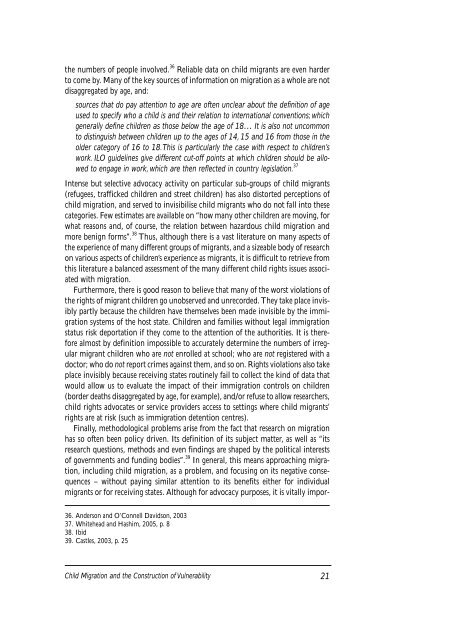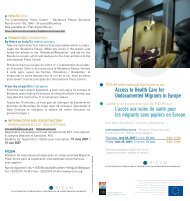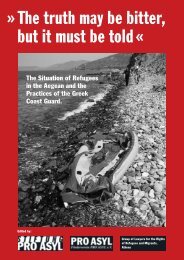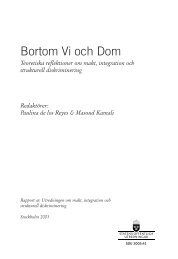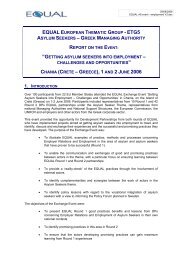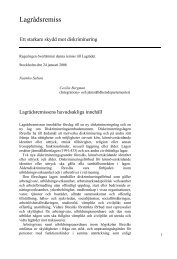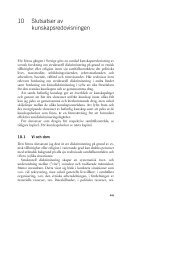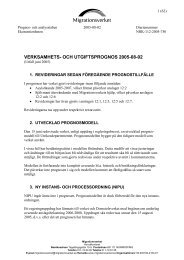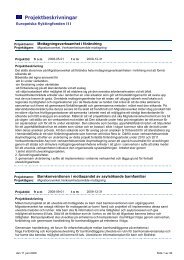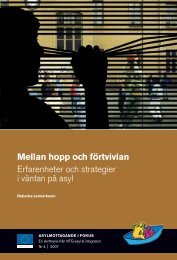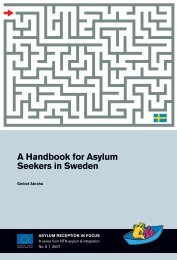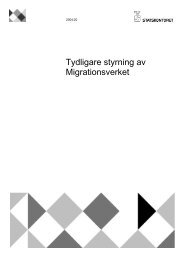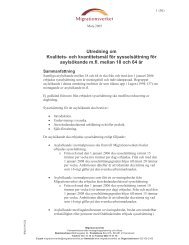and the Construction of Vulnerability - Child Trafficking
and the Construction of Vulnerability - Child Trafficking
and the Construction of Vulnerability - Child Trafficking
You also want an ePaper? Increase the reach of your titles
YUMPU automatically turns print PDFs into web optimized ePapers that Google loves.
<strong>the</strong> numbers <strong>of</strong> people involved. 36 Reliable data on child migrants are even harder<br />
to come by. Many <strong>of</strong> <strong>the</strong> key sources <strong>of</strong> information on migration as a whole are not<br />
disaggregated by age, <strong>and</strong>:<br />
sources that do pay attention to age are <strong>of</strong>ten unclear about <strong>the</strong> definition <strong>of</strong> age<br />
used to specify who a child is <strong>and</strong> <strong>the</strong>ir relation to international conventions; which<br />
generally define children as those below <strong>the</strong> age <strong>of</strong> 18… It is also not uncommon<br />
to distinguish between children up to <strong>the</strong> ages <strong>of</strong> 14, 15 <strong>and</strong> 16 from those in <strong>the</strong><br />
older category <strong>of</strong> 16 to 18.This is particularly <strong>the</strong> case with respect to children’s<br />
work. ILO guidelines give different cut-<strong>of</strong>f points at which children should be allowed<br />
to engage in work, which are <strong>the</strong>n reflected in country legislation. 37<br />
Intense but selective advocacy activity on particular sub-groups <strong>of</strong> child migrants<br />
(refugees, trafficked children <strong>and</strong> street children) has also distorted perceptions <strong>of</strong><br />
child migration, <strong>and</strong> served to invisibilise child migrants who do not fall into <strong>the</strong>se<br />
categories. Few estimates are available on “how many o<strong>the</strong>r children are moving, for<br />
what reasons <strong>and</strong>, <strong>of</strong> course, <strong>the</strong> relation between hazardous child migration <strong>and</strong><br />
more benign forms”. 38 Thus, although <strong>the</strong>re is a vast literature on many aspects <strong>of</strong><br />
<strong>the</strong> experience <strong>of</strong> many different groups <strong>of</strong> migrants, <strong>and</strong> a sizeable body <strong>of</strong> research<br />
on various aspects <strong>of</strong> children’s experience as migrants, it is difficult to retrieve from<br />
this literature a balanced assessment <strong>of</strong> <strong>the</strong> many different child rights issues associated<br />
with migration.<br />
Fur<strong>the</strong>rmore, <strong>the</strong>re is good reason to believe that many <strong>of</strong> <strong>the</strong> worst violations <strong>of</strong><br />
<strong>the</strong> rights <strong>of</strong> migrant children go unobserved <strong>and</strong> unrecorded. They take place invisibly<br />
partly because <strong>the</strong> children have <strong>the</strong>mselves been made invisible by <strong>the</strong> immigration<br />
systems <strong>of</strong> <strong>the</strong> host state. <strong>Child</strong>ren <strong>and</strong> families without legal immigration<br />
status risk deportation if <strong>the</strong>y come to <strong>the</strong> attention <strong>of</strong> <strong>the</strong> authorities. It is <strong>the</strong>refore<br />
almost by definition impossible to accurately determine <strong>the</strong> numbers <strong>of</strong> irregular<br />
migrant children who are not enrolled at school; who are not registered with a<br />
doctor; who do not report crimes against <strong>the</strong>m, <strong>and</strong> so on. Rights violations also take<br />
place invisibly because receiving states routinely fail to collect <strong>the</strong> kind <strong>of</strong> data that<br />
would allow us to evaluate <strong>the</strong> impact <strong>of</strong> <strong>the</strong>ir immigration controls on children<br />
(border deaths disaggregated by age, for example), <strong>and</strong>/or refuse to allow researchers,<br />
child rights advocates or service providers access to settings where child migrants’<br />
rights are at risk (such as immigration detention centres).<br />
Finally, methodological problems arise from <strong>the</strong> fact that research on migration<br />
has so <strong>of</strong>ten been policy driven. Its definition <strong>of</strong> its subject matter, as well as “its<br />
research questions, methods <strong>and</strong> even findings are shaped by <strong>the</strong> political interests<br />
<strong>of</strong> governments <strong>and</strong> funding bodies”. 39 In general, this means approaching migration,<br />
including child migration, as a problem, <strong>and</strong> focusing on its negative consequences<br />
– without paying similar attention to its benefits ei<strong>the</strong>r for individual<br />
migrants or for receiving states. Although for advocacy purposes, it is vitally impor-<br />
36. Anderson <strong>and</strong> O’Connell Davidson, 2003<br />
37. Whitehead <strong>and</strong> Hashim, 2005, p. 8<br />
38. Ibid<br />
39. Castles, 2003, p. 25<br />
<strong>Child</strong> Migration <strong>and</strong> <strong>the</strong> <strong>Construction</strong> <strong>of</strong> <strong>Vulnerability</strong><br />
21


